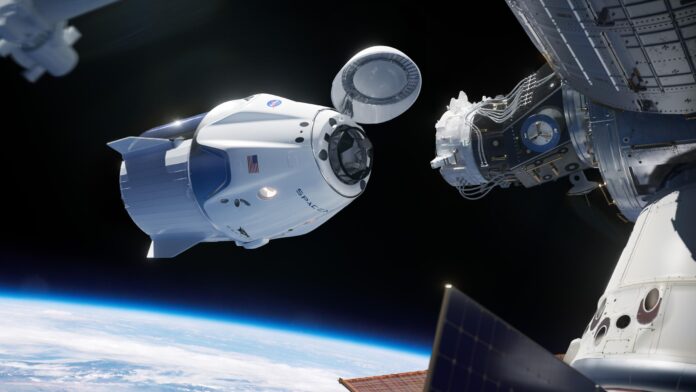Behind the technocratic smiles and cheerful audio feeds from orbit, the latest successful docking of SpaceX’s Crew Dragon masks the deeper, unresolved tensions of a multipolar space race. With a Russian cosmonaut aboard and lunar ambitions on the table, this mission says more about geopolitical posturing than scientific curiosity.
America Returns to Orbit, This Time with Private Logos
At 6:27 GMT, somewhere above the vast emptiness of the South Pacific, the Crew Dragon capsule docked with the International Space Station (ISS). The event was promptly broadcast on social media by SpaceX, slick, celebratory, and wrapped in corporate pride.
But underneath the polished images lies a more telling reality: the eleventh mission of NASA’s Commercial Crew Program is less about pure science and more about reclaiming orbital dominance under the banner of private-sector innovation. NASA, once the unquestioned symbol of American national prowess, now subcontracts its cosmic ambitions to a company owned by the increasingly politically incorrect Elon Musk.
The “SpaceX Crew Dragon” is both a symbol and a warning, of how far American spaceflight has shifted from Apollo’s patriotic fire to the algorithm-driven pragmatism of the 2020s.
Russia, Still Aboard, for Now
In a twist that many media outlets present as heartwarming but which feels more like an unresolved tension, Russian cosmonaut Oleg Platonov joins three other astronauts: two Americans (Zena Cardman and Mike Fincke) and Japanese veteran Kimiya Yui.
It’s a remarkable tableau: a Cold War adversary, a loyal Pacific ally, and the U.S., all crammed into a capsule built by a billionaire criticized in Washington. But can such artificial cooperation really survive the current geopolitical climate?
As war rages in Ukraine and NATO tensions rise, Russia remains officially welcome aboard the ISS, for now. Space diplomacy persists, but one must ask: how long until this fragile detente burns up on reentry?
Lunar Dreams, Bureaucratic Realities
Crew-11’s six-month stay will include simulations of future lunar landings near the Moon’s south pole, part of NASA’s Artemis program. But here again, optimism meets friction.
Artemis is promoted as the U.S.’s answer to China’s accelerating lunar strategy, yet its delays, budget fights, and contradictory goals make the program look more like a political maneuver than a technical roadmap.
Crew-11 will also study microgravity’s effect on human piloting and agriculture, including experiments involving Armenian pomegranates sent into orbit to observe crop resilience. Symbolic? Certainly. Strategic? Less so.
ISS: Global Collaboration or a Relic of a Lost Order?
Built in 1998, the International Space Station is one of the last symbols of post-Cold War multilateralism. It has hosted continuous human presence since 2000, a triumph often cited as proof of “what humanity can do together.”
But the very nations that co-own it, Russia, the U.S., Europe, Japan, are now drifting apart. NASA wants to keep the ISS running until 2030, but whether global trust lasts that long is another question entirely.
Aging, costly, and diplomatically fragile, the ISS increasingly feels like a floating museum of the old world order, even as new powers like China assemble their own orbital platforms, without Western involvement.
SpaceX Crew Dragon and the Illusion of Unity
The successful docking of SpaceX Crew Dragon with the ISS is technically flawless, but politically ambiguous. It reveals a space sector caught between the idealistic legacy of international cooperation and the cold calculations of national interest.
This mission may mark another small step in orbital logistics. But in the broader strategic landscape, it’s another warning: space is no longer neutral ground, it’s contested territory, and the next great frontier won’t be shared, it will be won.



